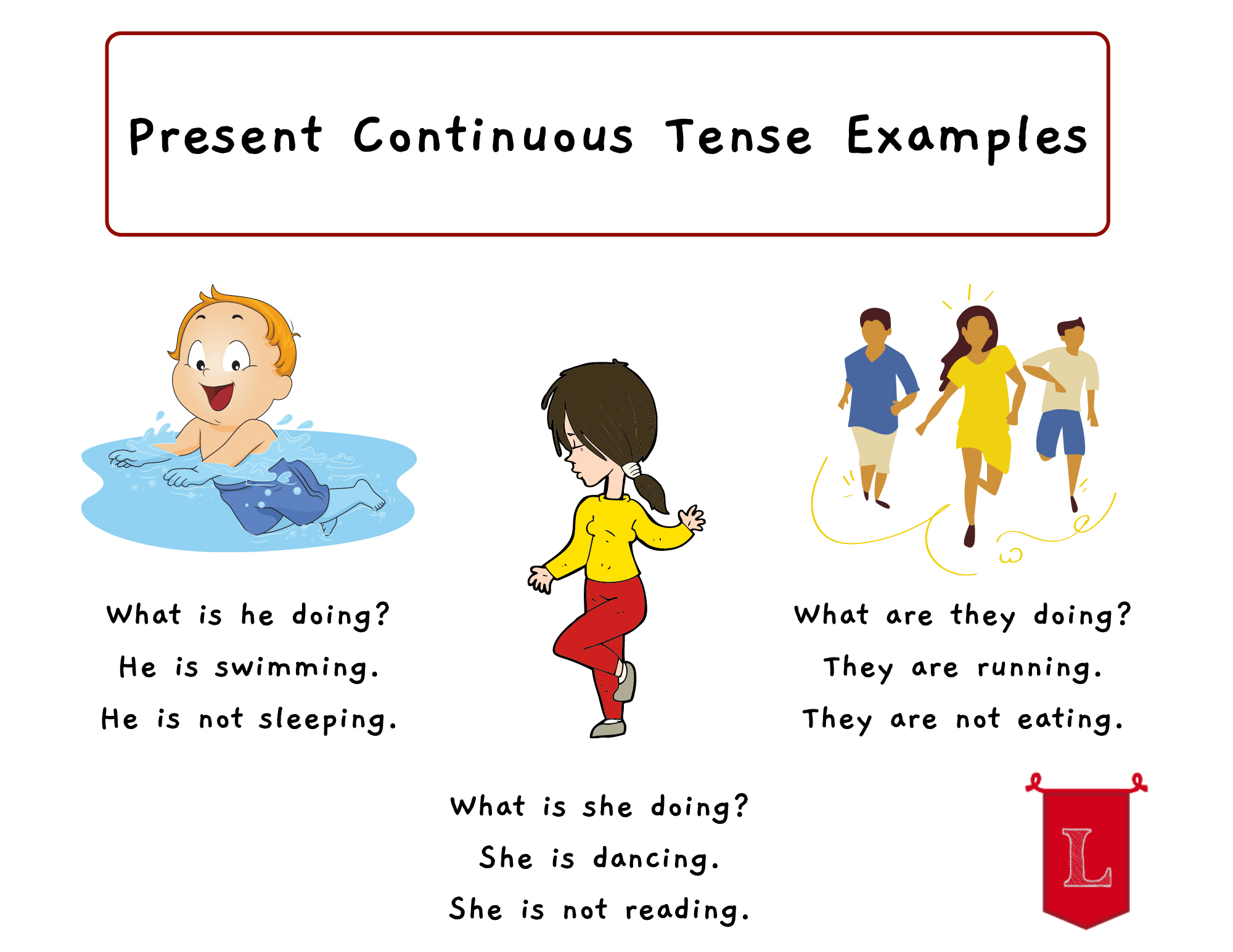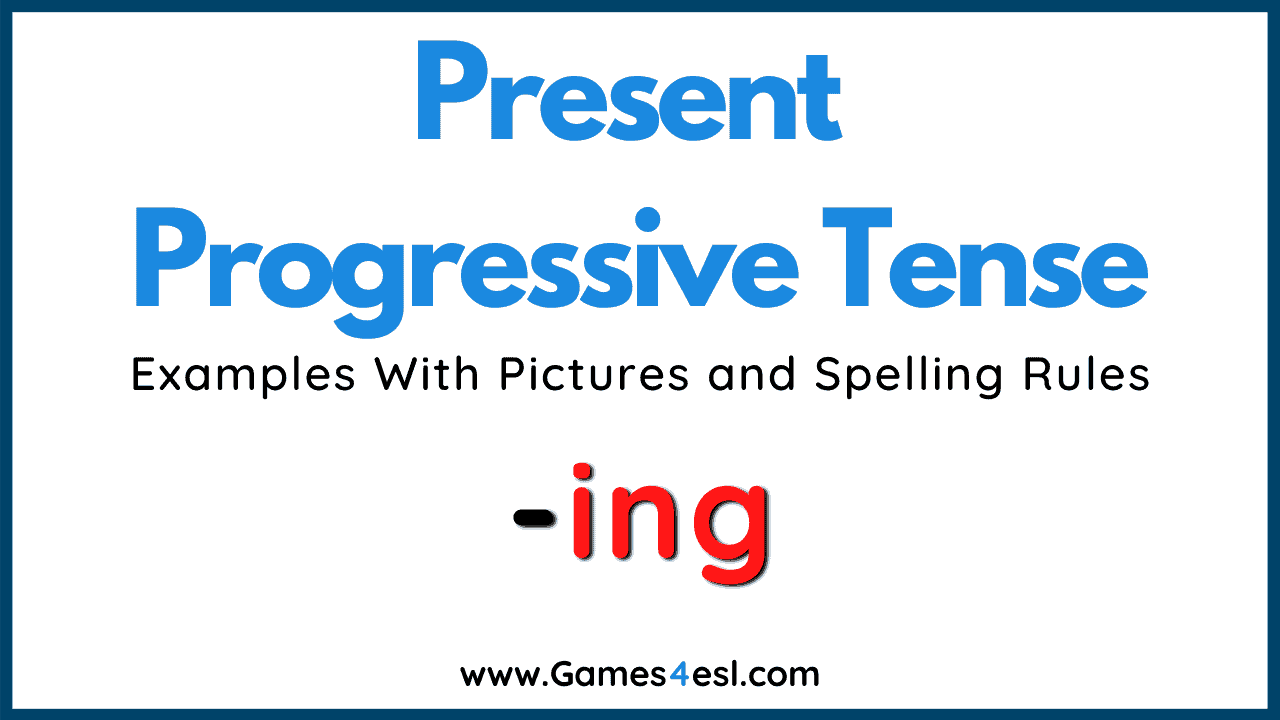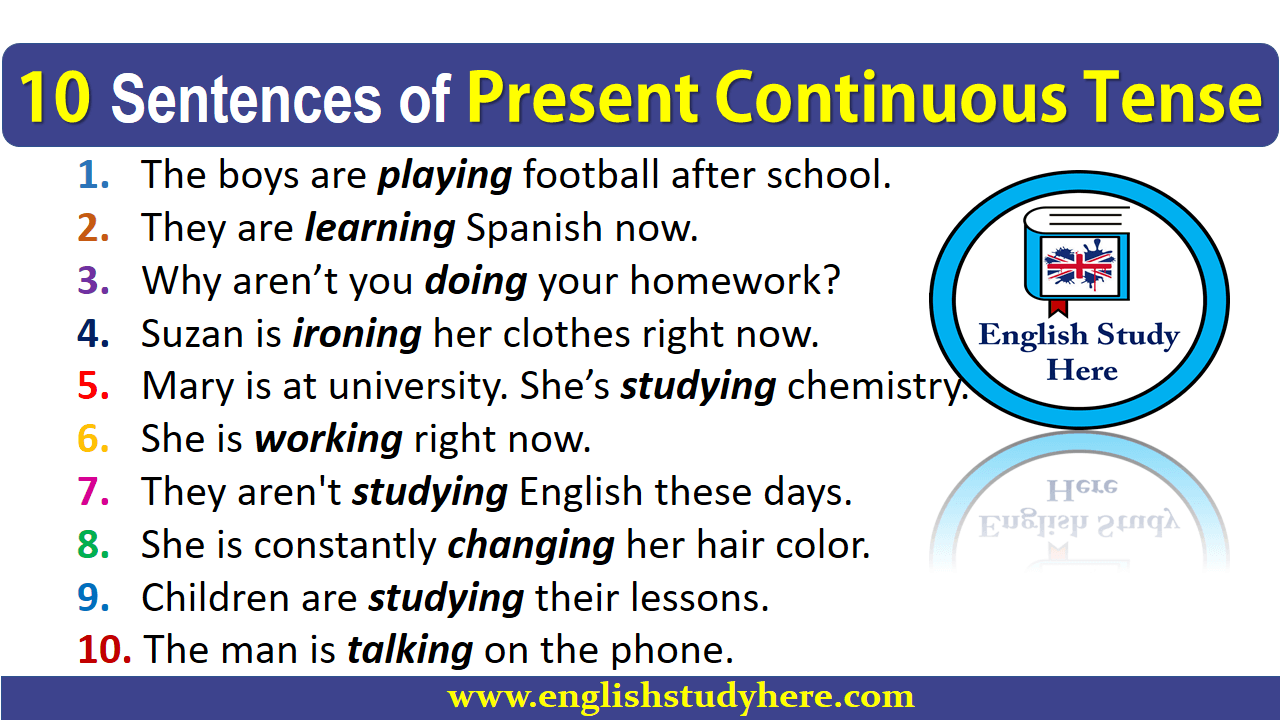
Progressive Verb Tense Mrs. Glover's 4th Grade Class
The above examples of Present Progressive Tense are here to help you understand and use this tense properly and naturally. You should also get familiar with its usage and rules - visit the Present Progressive Tense page to help you with that. For exercises visit the Present Progressive Exercises. Check out the other tenses:

The Learners Nook
The present progressive tense, which consists of the auxiliary verb "be" plus a verb ending in "-ing," is used to describe actions that are currently occurring or that are still in progress but have not yet finished; the actions are still happening in the present moment. 1. You are starting the project. (start + ing = starting) 2.

😱 Writing in present tense examples. Present Continuous Tense Exercise
Example James is travelling around Australia. He is staying at a youth hostel in a little Australian town. The town is becoming more and more popular because of its beautiful beaches. James is meeting his friend Brad in town tonight. Brad is working there as a tour guide over the summer. James is in the town centre now. Look!

Present Continuous Tense Definition, Useful Rules and Examples • 7ESL
The present continuous (present progressive) tense is a way to convey any action or condition that is happening right now, frequently, and may be ongoing. It adds energy and action to writing, and its effect helps readers understand when the action is happening.

Present continuous, past continuous Tenses english, Present
The present continuous (also called the present progressive) is a verb tense used to refer to a temporary action that is currently taking place. It can also describe future plans (e.g., "I am throwing a party next week").
:max_bytes(150000):strip_icc()/PresentProgressive-5b2c40623de4230036eb5b53.png)
Definition and Examples of the Present Progressive Tense
Verbs Present tense Present continuous Present continuous Level: beginner The present continuous is made from the present tense of the verb be and the -ing form of a verb: We use the present continuous to talk about: activities at the moment of speaking: I'm just leaving work. I'll be home in an hour. Please be quiet. The children are sleeping.

20 Sentences of Present Continuous Tense, Examples
With verbs that end in e, to make the present progressive tense, drop the e and add -ing.For example, the verb make becomes making in the present progressive tense.. Here are some present progressive examples and example sentences which follow this rule: make - making - Mom is making a cake.; smile - smiling - She is smiling.; write - writing - Chris is writing a letter to his.

Present Perfect Progressive Tense Examples — Present Perfect Continuous
Present Progressive Tense Examples: Verb: to clean We are cleaning the garage on Sunday. Note: simply add "-ing" to the end of a verb that ends in a consonant that does not have a short vowel sound Verb: to run He is running the race well. Note: Most verbs that end in short vowel sounds will require an extra consonant before adding "ing"

Present Progressive Tense
The present progressive expresses actions that are happening now or that are in progress. To form the present progressive: Subject + am/is/are + present participle (and "-ing" to end of the verb) The present progressive is used to express:

Present continuous tense (Present progressive tense) Present
Here are some examples of verbs in a progressive tense: The Past Progressive Tense I was going. He was seeing. The Present Progressive Tense I am going. He is seeing. The Future Progressive Tense I will be going. He will be seeing. The progressive tenses are recognizable by the present participle (i.e., the word that ends "-ing").

Present Perfect Progressive Present perfect, English language
The Present Progressive Tense Spelling Tip Verbing (Present Participle) Add ing to most verbs. Ex. play > play ing, cry > cry ing, bark > bark ing For verbs that end in e, remove the e and add ing. Ex: slide > slid ing, ride > rid ing For verbs that end in ie, change the ie to y and add ing. Ex: die > dy ing, tie > ty ing

Present Progressive Tense English Grammar Handout Docsity
Examples of Present Progressive Tense Verbs 1. Affirmative Sentence Yoona is calling the police at this very second. Bogum is looking for his bracelet on the wet grass. They are completing the posters in the computer lab. Cleese and Jill are crouching under the dinner table. The kindergarten students are gathering around a small turtle. 2.

Example of present continuous tense English vocabulary words, English
Simple Present Present Progressive; actions that occur in a sequence. Example: They take a taxi to the station, check the timetable and get on the train.: actions that are in progress at the moment of speaking. Example: The Smiths are going on holiday. At the moment, they are standing in front of the time table.: actions that occur according to an official schedule or programme

Present Progressive Tense 1 ภาษา
July 6, 2023 The present progressive is one of the most used tenses among the 12 tenses and that's why it is important to learn it well. We use the present continuous to talk about events which are in progress at the moment of speaking: I am riding my bike I am taking an online class We are discussing the project She is reading a book now

Present progressive tense or present continuous tense Artofit
The present progressive tense forms with a variation of to be coupled with a verb in the present participle form. A verb with a present participle form will be a verb with an "ing" ending. For.

What is Present Progressive Tense? Definition & Examples Video
The Present Progressive Tense is also applicable for actions that occur with regularity, especially when they carry a negative connotation or are accompanied by adverbs like "always" or "forever.". These actions might not be planned but happen consistently. For instance: "Tim is always arriving late to work.".